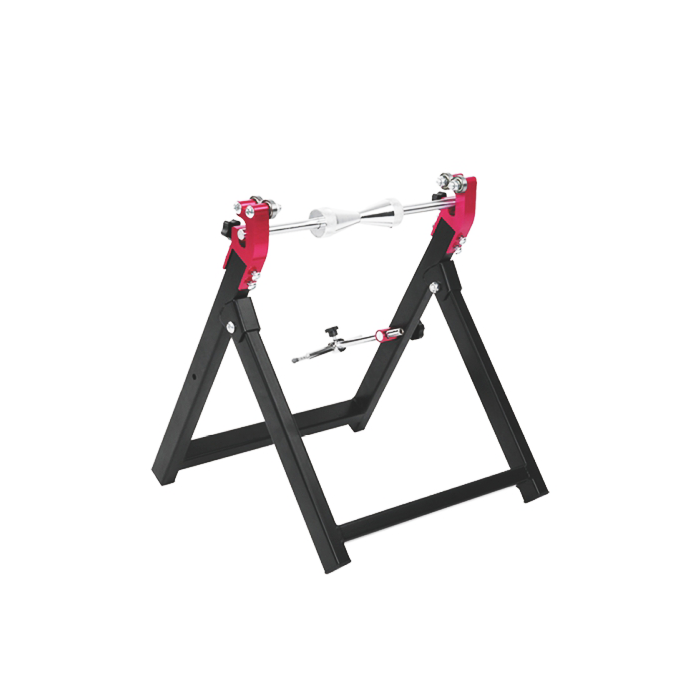Understanding Wheel Truing and Its Importance
The Science Behind Wheel Balance
Wheel balance is pivotal for optimal motorcycle performance. A properly balanced wheel distributes weight evenly, reducing vibration and enhancing stability. This equilibrium is achieved through precise spoke tension and alignment, ensuring the rim remains centered relative to the hub. Understanding the interplay between radial and lateral trueness is crucial for maintaining this delicate balance.
Impact of Untrued Wheels on Riding Experience
Untrued wheels can significantly degrade your riding experience. They may cause unwanted vibrations, compromising control and comfort. Handling becomes unpredictable, especially during cornering or at high speeds. Moreover, tire wear increases dramatically with an out-of-true wheel, leading to premature replacement and potential safety hazards. Recognizing these impacts underscores the importance of regular wheel maintenance using a motorcycle truing stand.
When to True Your Motorcycle Wheel
Knowing when to true your wheel is as important as knowing how. Signs that your wheel needs truing include visible wobble while spinning, uneven tire wear, and a noticeable decrease in handling precision. After impacts or accidents, even if damage isn't immediately apparent, it's wise to check wheel trueness. Regular inspections, particularly before long rides or racing events, can prevent issues before they become severe.
Essential Tools and Preparation for Wheel Truing
Selecting the Right Truing Stand
Choosing an appropriate motorcycle truing stand is crucial for accurate results. Look for stands with sturdy construction and precise adjustment mechanisms. Ensure the stand is compatible with your wheel size and axle type. Some advanced stands offer digital readouts for enhanced precision, while others rely on traditional dial indicators. Consider portability if you plan to use the stand in different locations or for trackside adjustments.
Additional Tools for Effective Truing
Beyond the motorcycle truing stand, several tools are indispensable for wheel truing. A quality spoke wrench, matched to your spoke nipples, is essential. Dial indicators or feeler gauges help measure runout accurately. A tension meter can ensure consistent spoke tension around the wheel. Don't forget basic supplies like lubricant for spoke nipples and a marker for tracking adjustments. Having a comprehensive toolkit enhances efficiency and precision during the truing process.
Preparing Your Workspace
A well-organized workspace is vital for successful wheel truing. Choose a well-lit area with ample space to move around the wheel. Ensure your work surface is level and stable. Clean the wheel thoroughly before mounting it on the stand, as dirt or debris can affect your measurements. Have all your tools within easy reach to maintain focus during the truing process. Consider using a padded mat to protect the wheel if it needs to be laid down during the procedure.
Step-by-Step Guide to Truing Your Motorcycle Wheel
Mounting the Wheel and Initial Assessment
Begin by securely mounting your wheel on the truing stand. Ensure it's centered and can spin freely. Slowly rotate the wheel, observing for any lateral (side-to-side) or radial (up-and-down) runout. Use your dial indicator or feeler gauge to measure the extent of any deviations. Mark problem areas with a temporary marker for easy reference. This initial assessment guides your truing strategy and helps you focus on the most significant issues first.
Adjusting Spoke Tension for Lateral Truing
Lateral truing involves adjusting the wheel's side-to-side alignment using a motorcycle truing stand. Identify areas where the wheel deviates from the center line. Using your spoke wrench, tighten spokes on the side opposite the deviation and loosen spokes on the same side. Make small, incremental adjustments, typically a quarter turn at a time. After each adjustment, spin the wheel to reassess. Remember, spoke adjustments affect adjacent areas, so work gradually around the wheel, maintaining overall balance.
Addressing Radial Runout and Final Checks
Radial truing corrects any up-and-down movement in the wheel. Focus on high or low spots identified during your initial assessment. Tighten spokes in low areas and loosen them in high areas, always working in small increments. As with lateral truing, check your progress frequently. Once you've addressed major issues, perform a final check of both lateral and radial trueness. Fine-tune as necessary, aiming for consistent spoke tension around the entire wheel. Remember, perfection is the goal, but even small improvements can significantly enhance your motorcycle's performance.
Conclusion
Mastering the art of truing a motorcycle wheel using a motorcycle truing stand is an invaluable skill for any rider or mechanic. This process not only enhances your motorcycle's performance and safety but also extends the life of your tires and improves overall riding experience. Remember, patience and precision are key. With practice, you'll develop a feel for the subtle adjustments needed to achieve a perfectly true wheel. Regular maintenance and attention to wheel trueness will ensure your motorcycle remains in top condition, ready for whatever adventures lie ahead on the open road.
Contact Us
Ready to elevate your motorcycle maintenance game? For high-quality truing stands and expert advice, contact RUNVA ENTERPRISES LIMITED at info@runva.com.cn. Our professional-grade tools and equipment are designed to help you achieve perfect wheel alignment every time.

_1737625693698.webp)


